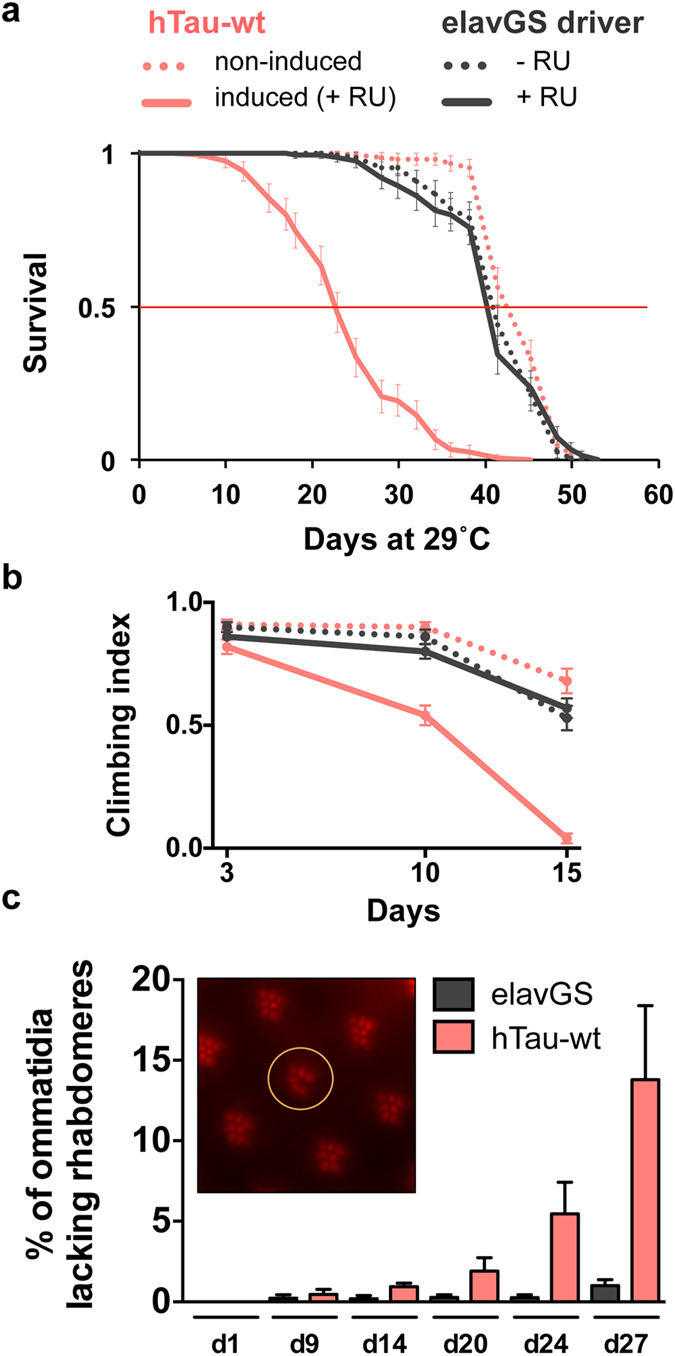Figure 1. Decreased fly survival, impaired climbing ability and increased photoreceptor neurodegeneration in an adult-onset hTau overexpression model.

(a) Survival was drastically reduced in flies overexpressing the full-length 2N4R hTau-wt protein (plain vs. dotted red curve) in the adult nervous system (****p < 0.0001, RU486-induced hTau-wt vs. non-induced controls). Survival of the elavGS driver line control was not affected by RU486 feeding (black curves). (b) Flies overexpressing the hTau-wt protein (plain red curve) presented progressive, drastic climbing defects as compared to both non-induced controls and elavGS flies (****p < 0.0001, RU486-induced hTau-wt vs. non-induced controls at day 10 and day 15, two-way ANOVA). (c) hTau-wt overexpression in adult fly neurons led to progressive photoreceptor neurodegeneration as measured by the percentage of ommatidia lacking rhabdomeres over age (**p < 0.01, one-way ANOVA), while RU486-fed elavGS controls showed no significant neurodegeneration over time (p > 0.05, one-way ANOVA). The inset displays a representative caption of one ommatidium lacking the central rhabdomere (circle), surrounded by several intact ommatidia containing 7 visible rhabdomeres.
